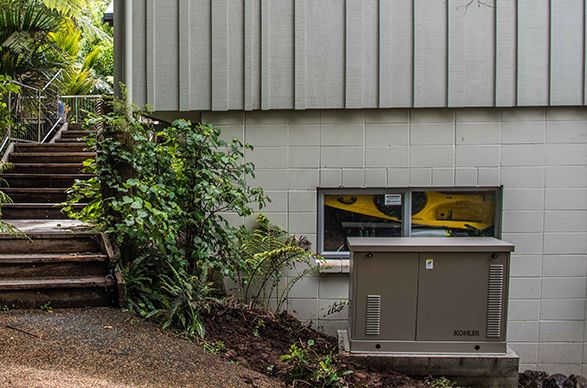How to Choose the Right Size Standby Generator for Your Home or Business

Getting a standby generator doesn’t have to be complicated. The key is making sure the system is correctly sized for your property and your lifestyle. Too small, and it won’t cover the essentials when the power goes out. Too big, and you’ll overspend on fuel and equipment you don’t need.
At OMC, we’ve simplified the process into a few clear steps:
Step 1: Understand Your Power Needs
The first step is to make a list of the appliances and systems you must keep running during an outage. Some common high-draw items to consider include:
- Water pumps and septic tank systems: Vital if you’re on tank water or septic, as they usually draw a lot of current on startup.
- Hot water cylinders: Some homeowners prefer to leave these off, but they can be factored in if hot water is essential.
- Heating and cooling systems: Heat pumps, underfloor heating, or air conditioning can dramatically increase demand.
- Kitchen essentials: Fridges, freezers, ovens, or even induction cooktops if you want to cook as normal.
- Business critical equipment – for small offices or home businesses, things like eftpos, servers, medical equipment, or workshop machinery.
A backup generator doesn’t need to power everything. The trick is deciding what’s “essential” versus “nice to have” so we can size a system that balances comfort with cost.
Step 2: Share Some Quick Details With Us
Once you’ve got a rough idea of what you’d like covered, we’ll ask for:
- A couple of photos of your switchboard, including a close-up of the main switch and any submains.
- Any notes about recent or planned electrical upgrades.
- A quick chat about how often you experience outages and how long they usually last.
This helps us calculate load requirements more accurately and spot any quirks in your setup before we come on site.
Step 3: Free Site Visit – No Obligation
One of our team will visit your property to confirm the details, look at the physical install options (concrete pad, access, noise considerations), and check the wiring layout. This ensures the standby generator we recommend isn’t just the right size, but also the right fit for your property.
Step 4: Stress-Free Installation
From here, OMC manages the entire generator install process:
- Concrete pad and positioning
- All installation requirements
- Electrical compliance and connections
- Custom enclosure options
- Commissioning and testing
That means you don’t need to juggle multiple contractors – we handle it all.
Peace of Mind When the Lights Go Out
With an automatic standby system, you don’t even need to think about it. When the mains power fails, your backup generator will detect the outage and start up within around 15 seconds, keeping your home or business running without interruption.
And it doesn’t stop at installation, OMC can also manage annual service plans, ensuring your generator is regularly maintained and always ready when you need it most.
Whether it’s a Diesel Generator, LPG Generator, or a Petrol Generator, we’ll recommend the right generator for your property, lifestyle or business needs. The result is complete peace of mind: you’ll know your essentials are protected 24/7, whether it’s water pumps, heating, refrigeration, or business critical equipment.